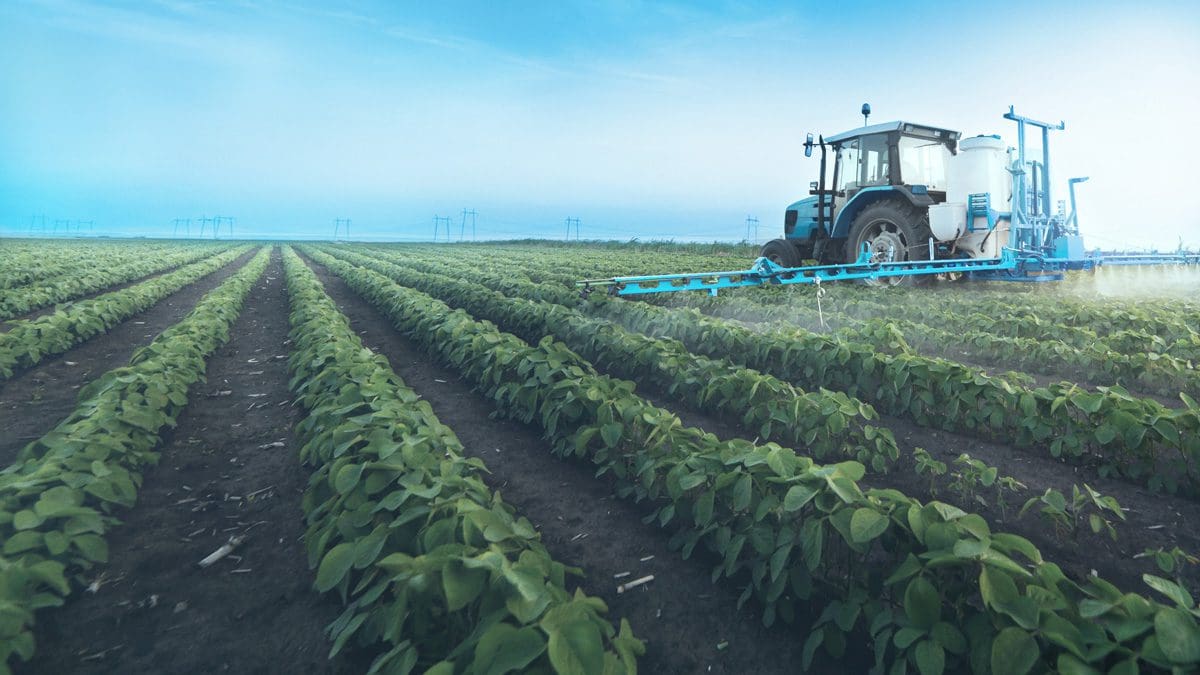Challenges in Agriculture and Food Security
Agriculture is facing many challenges. Conventional farming practices are degrading soil health, releasing carbon from the soil, increasing erosion, polluting water sources, polluting the air and polluting natural ecosystems.
It is estimated that food production and other types of land use are responsible for 25-40% of global greenhouse gas emissions, including emissions from processing, transporting, storing, cooling, and disposing of food.
Global food production accounts for 72% of freshwater use. Many freshwater aquifers and surface water systems are being depleted or polluted at a faster pace than natural replenishment.
It was estimated in 2020 that 44% of farmers, farmworkers, and pesticide applicators have at least one incident of acute pesticide poisoning every year, and 11,000 die annually from accidental pesticide poisoning.
More people are suffering from “hidden hunger”—they are getting enough calories but lack essential nutrients. Conventional farming’s focus on yields has depleted soils worldwide and has led to a decline in the nutritional quality of many crops.
More than 800 million people across the globe go to bed hungry every night, most of them smallholder farmers who depend on agriculture to make a living and feed their families. Nearly 75% of poor people in developing countries live in rural areas. Growth in the agriculture sector has been shown to be at least twice as effective in reducing poverty as growth in other sectors.
These issues will only intensify as food producers try to feed an estimated 9 billion people by 2050. Food producers are under pressure from regulators and the public to use resources more efficiently, reduce emissions, use techniques that have less negative environmental impact, and employ technologies that enable end-to-end food traceability.
Solutions from Information and Communications Technologies (ICTs)
Digital technologies, including sensors on farming equipment and plants, drones, robots, land imaging, remote sensing, advanced irrigation systems, distributed ledger technology, artificial intelligence and data analytics are being used to address some of the challenges in agriculture and improve global food security.
Sensors, coupled with farm management software, can advise farmers on what crops to plant on each parcel of their land and how much water and fertilizer to apply to each plant. Advances in irrigation technologies enable precise application of water and nutrients to specific plants over large areas.
Farm management software, sensing technologies, drones, and other devices that gather data on soil properties, crop health, and weather conditions are being used to manage farms remotely with robots and advanced irrigation systems.
Fresh produce spends up to 50% of its shelf life invisible in transit from farm to retailer, making it difficult to pinpoint what happens to the 33% of global food that is lost or wasted. Distributed ledger technology (DLT), such as blockchain, stores digitized records in a decentralized and immutable manner. The Internet of Things (IoT) combined with a shared distributed ledger technology based network to collect and share food data can enable:
- tracking the origin of a product, its storage environment along the supply chain, its real-time location, and remaining shelf life
- immediate identification of who is impacted and who should take action when a food safety issue is reported
- reduction in opportunities for fraud by enabling real-time traceability of food
Budget-friendly mobile phones, internet, and other services to disseminate information, in addition to providing rural farmers with improved access to climate-smart solutions and the appropriate knowledge to use them, enable farmers to access:
- climate-smart information pertaining to sowing, crop protection, and improving soil fertility and yield
- weather advisories and alerts to prepare for floods, droughts, pests, and disease outbreaks
- reliable information on the best market price for their produce and inputs (e.g., seeds, fertilizers)
- information on consumer demand
- information about financial services (e.g., affordable crop insurance)
IEEE Support for Climate-Smart Sustainable Agriculture
The greatest constraints to adopting agriculture technologies for climate-smart sustainable agriculture practices are the up-front costs associated with purchase and installation, and inadequate broadband connectivity.
The IEEE Standards Association (IEEE SA) has developed, and is developing, global standards to advance interoperability in agriculture technologies. The IEEE SA OPEN platform supports open source solutions to bring down the cost of information and communication technologies. IEEE SA’s Connectivity and Telecom Practice is addressing the need for reliable and affordable rural broadband connectivity. The IEEE SA Healthcare and Life Science Practice is addressing the need for validated and accessible “smart” digital agriculture tools to support food sustainability and food security.
IEEE members and volunteers are working directly with farmers around the globe to install and use digital technologies to implement climate-smart agriculture practices on farms.
IEEE global conferences bring stakeholders together to discuss ideas to develop and use innovative tools and intelligent systems to address sustainable infrastructure and issues facing resource-constrained and vulnerable populations.
Learn More About IEEE Standards, Initiatives, and Programs on Agriculture and Get Involved
Author: Joan Woolery, Sr. Project Manager, Industry Connections Program, IEEE Standards Association (IEEE SA)









You’ve shared some incredibly useful information. This is frequently a terrific way for us to broaden our knowledge while remaining useful. Thank you for bringing this article to our attention.